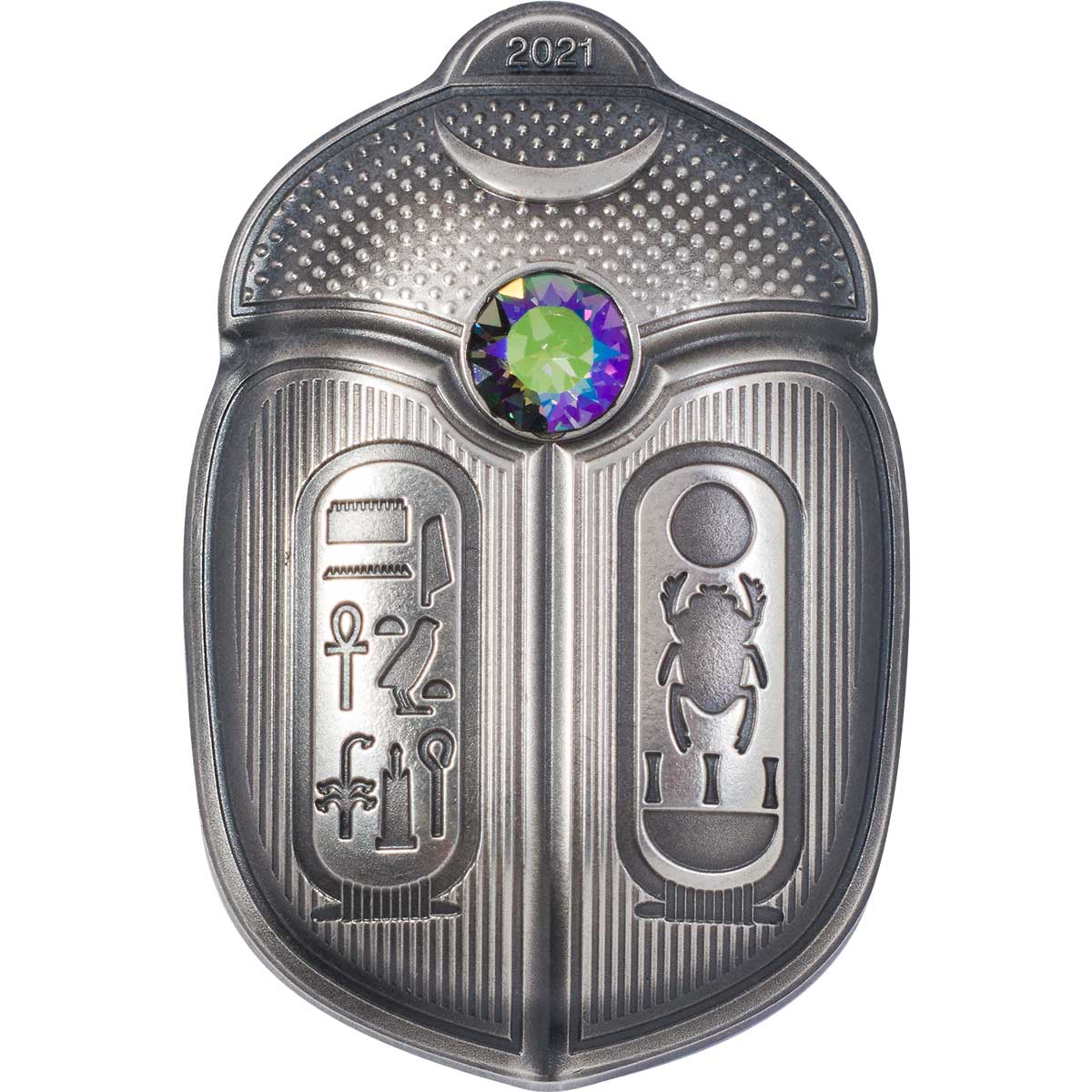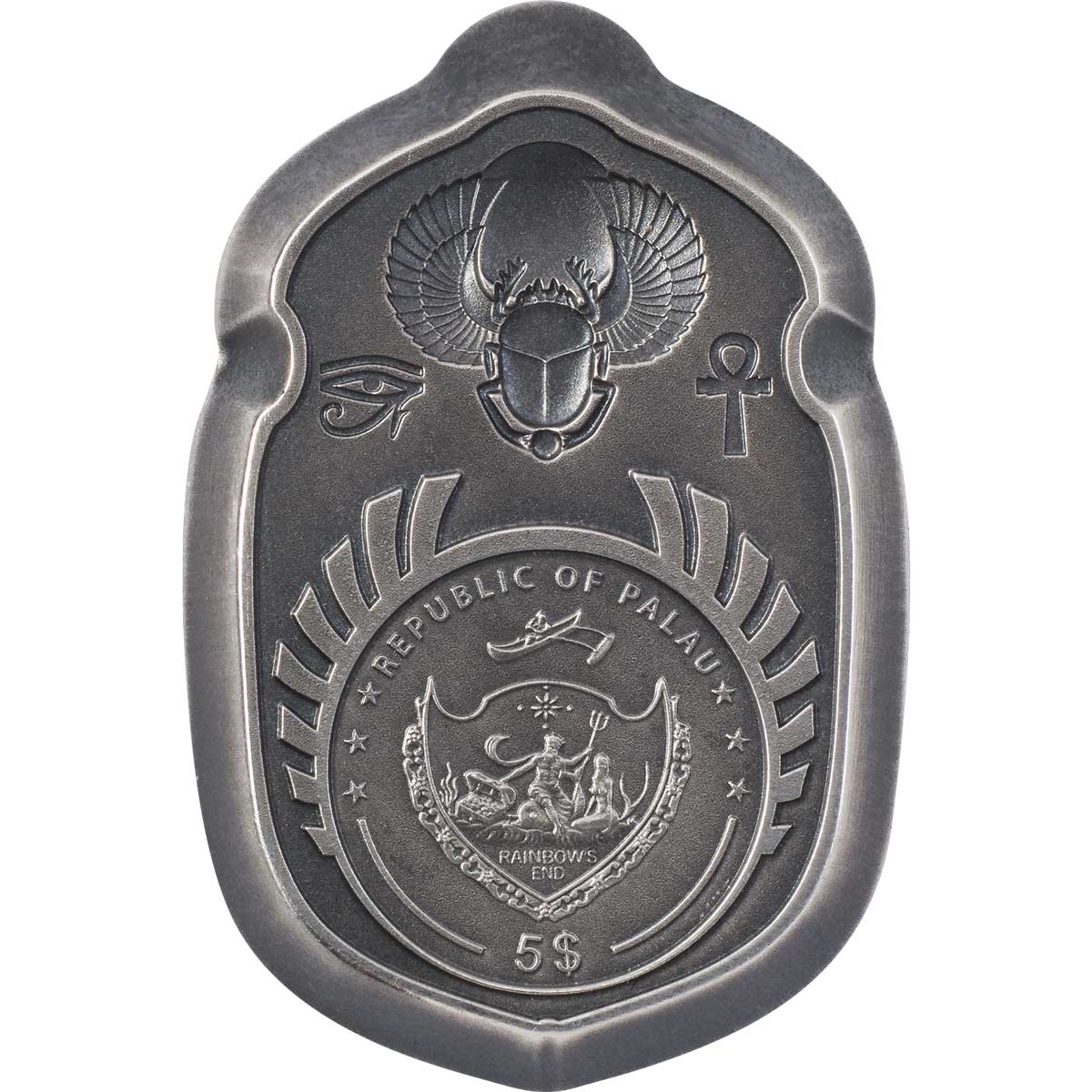The iconic Ancient Egyptian Scarab is brought to life with CIT’s gorgeous new dimensional silver coin
There’s never been a shortage of modern coins featuring the Ancient Egyptian dynastic civilisation, hardly surprising given it persevered for almost three millennia. The sheer scale of monumental construction, the wide variety of iconography and art, and the breadth of mythology and culture is a rich breeding ground for coin designers.
One of the most popular and long-lived symbols of the Ancient Egyptians was the scarabaeus – the scarab beetle – which is found referenced in jewellery, art and hieroglyphic writings all over the old empire. It’s also appeared on many coins, most notably a beauty by Mint XXI, and a whole range from the Mint of Poland experimenting with different finishes on a standard base design. CIT also produced a striking pair of three-coin sets, also with different finishes, but with a lean towards nature instead of Egypt.
CIT’s latest is a clever look at the scarab as a piece of Egyptian cultural art, inextricably linked with the Pharoahs as they were. This is a fullly dimensional piece depicting a scarb in its cultural form. The producer has chosen to link each release with a specific pharoah, and with the centennial anniversary of the discovery of Tutankhamun’s tomb next year, the boy-king was an obvious choice.
The story of Howard Carter’s opening of the tomb and the incredible contents, one of which, the gold mask, has come to symbolise the entire culture as much as the pyramid tombs have, is well known. To the left and right of the reverse side of the coin sits Tutankhamun’s cartouche. On the left is the Nomen ‘Tutankhamun, ruler of Upper Heliopolis’, and on the right the Prenomen ‘Nebkheperura’, his throne name.
The obverse has the stylised winged scarab symbol, one the Mint of Poland has used extensively, along with the national emblem of the issuing country, Palau. Everything is antique-finished and there’s an iridescent Swarovski crystal inset where the three segments meet.
This is a really beautiful piece, recognisably Egyptian in style, and at an ounce in weight, more affordable than much of CIT’s higher-end output. Even if you only have a passing interest in the subject, you have to admit this is an interesting piece. If you love Egyptology, picking up one of the 1,500 of these minted will be a must. Available to order now, we look forward to seeing this series move forward with more homages to the old kings. We’re up for a Ramesses II for starters…
SCARABAEUS
Scarabs were the most popular amulets in Ancient Egypt. They survive in large numbers and, through their inscriptions and typology, they are an important source of information for archeologists and historians of the ancient world. They also represent a significant body of ancient art.
For reasons that are not clear (although no doubt connected to the religious significance of the Egyptian god Khepri), amulets in the form of scarab beetles had become enormously popular in Ancient Egypt by the early Middle Kingdom (approx. 2000 BCE) and remained popular for the rest of the pharaonic period and beyond. During that long period the function of scarabs repeatedly changed. Primarily amulets, they were also inscribed for use as personal or administrative seals or were incorporated into jewelry. Some scarabs were apparently created for political or diplomatic purposes to commemorate or advertise royal achievements. By the early New Kingdom heart scarabs had become part of the battery of amulets protecting mummies. (Source: Wikipedia)
| SPECIFICATION | |
| DENOMINATION | $5 Palau |
| COMPOSITION | 0.999 silver |
| WEIGHT | 31.1 grams |
| DIMENSIONS | 27.0 x 18.0 mm |
| FINISH | Antique |
| MODIFICATIONS | Inset Swarovski rystal, Fully dimensional |
| MINTAGE | 1,500 |
| BOX / C.O.A. | Yes / Yes |








Leave A Comment